Death isn’t exactly what most of us think about when we travel across the world to visit our dream tourist attractions.
Unfortunately though many people are unaware of the dangers posed by some of them.
That’s why we’ve conducted a study to determine the most dangerous tourist attractions around the world.
Using data from various sources, including official government statistics and news reports, we analyzed 125 popular tourist attractions across the globe to come up with this ultimate list.
Key Findings
- The most dangerous tourist attraction in the world is Mont Blanc which is a mountain in the Alps. It sees approximately 500 deaths per 100,000 visitors.
- In the USA, the most dangerous tourist attraction is North Cascades National Park which is a mountain range in Washington. It sees around 3 deaths per 100,000 visitors.
- In the UK, the most dangerous attraction is Ben Nevis, a mountain in Scotland. Just over 4 climbers fall to their deaths per 100,000 climbers.
- 60% of the attractions that made the list are mountains, with the most dangerous one being Mont Blanc.
- 20% are water-based attractions including lakes, rivers and diving spots, with the most dangerous one being the Dead Sea in Israel.
- The most dangerous attraction that isn’t a mountain is the Salar de Uyuni salt flats in Bolivia where motor vehicle crashes are common.
World’s Most Dangerous Tourist Attractions
We’ve ranked the following tourist attractions based on the number of deaths per 100,000 visitors.
To come up with this figure, we divided the average annual deaths by the average number of annual visitors and multiplied it by 100,000.
We’ve also included the figure for the average number of deaths per year for each attraction.
| Rank | Attraction | Country | Type | Deaths per 100,000 Visits | Average Deaths Per Year |
|---|---|---|---|---|---|
| 1 | Mont Blanc | France/Italy | Mountain | 500 | 100 |
| 2 | Matterhorn | Switzerland | Mountain | 342.9 | 12 |
| 3 | North Yungas Road | Bolivia | Mountain Road | 168 | 42 |
| 4 | Mount Kilimanjaro | Tanzania | Mountain | 20 | 10 |
| 5 | Mount Everest | Nepal | Mountain | 20 | 7 |
| 6 | Salar de Uyuni | Bolivia | Salt Flat | 6.2 | 4 |
| 7 | Dead Sea | Israel | Lake | 5.6 | 45 |
| 8 | Ben Nevis | UK | Mountain | 4.6 | 6 |
| 9 | North Cascades National Park | USA | Mountain Range, National Park | 3.3 | 1 |
| 10 | Amazon Rainforest | Brazil | Rainforest | 3.1 | 4 |
| 11 | Mount Fuji | Japan | Mountain | 2.3 | 7 |
| 12 | Komodo National Park | Indonesia | National Park | 1.8 | 4 |
| 13 | Picos de Europa | Spain | Mountain Range | 1.7 | 10 |
| 14 | Colca Canyon | Peru | Canyon | 1.7 | 3 |
| 15 | Mount Washington | USA | Mountain | 1.6 | 4 |
| 16 | Blue Hole | Egypt | Diving Spot | 1.6 | 8 |
| 17 | Lake Piru | USA | Lake | 1.4 | 1 |
| 18 | Mount Snowdon | UK | Mountain | 1.4 | 8 |
| 19 | Colorado River | USA | River | 1.1 | 7 |
| 20 | Mount Aspiring National Park | New Zealand | Mountain Range, National Park | 1 | 1 |
1. Mont Blanc, France/Italy
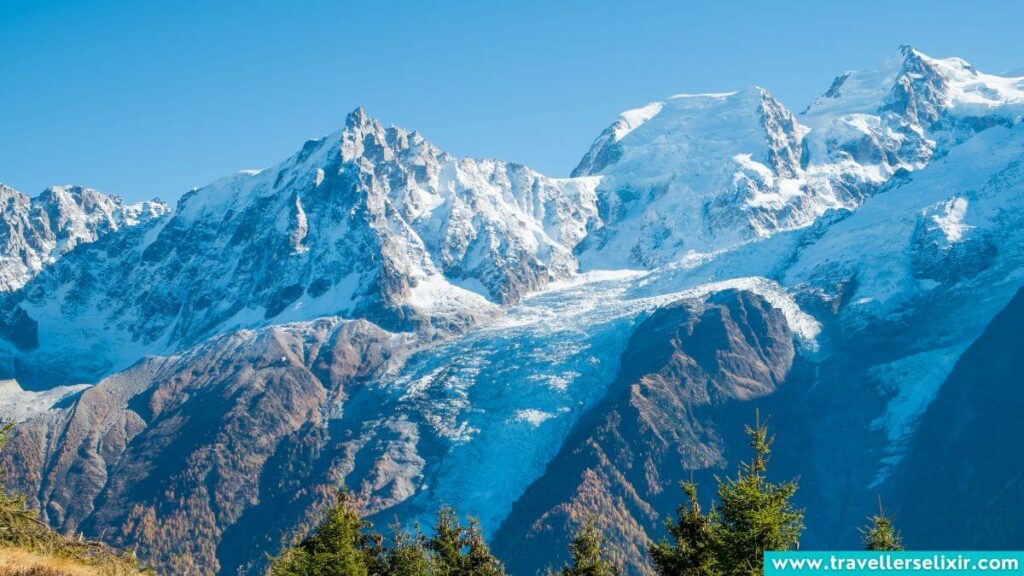
- Deaths per 100,000 Visitors: 500
- Average Annual Visitors: 20,000
- Average Annual Deaths: 100
- Top Cause of Death: Falls
Right at the top of the list is Mont Blanc, a 4,809m mountain in the Alps. It’s located on the French-Italian border so it is claimed by both countries.
Only roughly 20,000 people attempt to climb Mont Blanc each year but shockingly, around 100 of them fall to their deaths, get crushed by avalanches or die in skiing accidents every year.
One man fell 1000 ft accidentally in September 2022, whilst another died by falling 300m when trying to rescue a stranded climber in July 2023.
2. Matterhorn, Switzerland
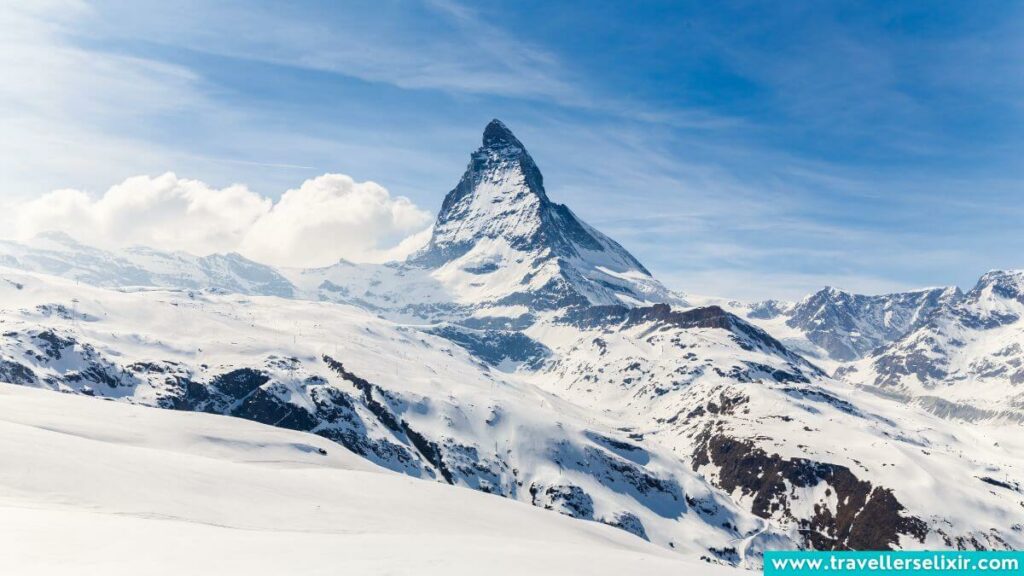
- Deaths per 100,000 Visitors: 342.9
- Average Annual Visitors: 3,500
- Average Annual Deaths: 12
- Top Cause of Death: Falls
Second on the list is another mountain located in the Alps but this time it’s the Matterhorn which is located near Zermatt, Switzerland.
Less people attempt to climb the Matterhorn each year compared to Mont Blanc (just 3,500) but on average, 12 of them die each year trying to do so.
In 2020, one man fell to his death when his abseiling rope broke mid-climb and another two climbers perished after falling 400m in July 2022.
3. North Yungas Road, Bolivia
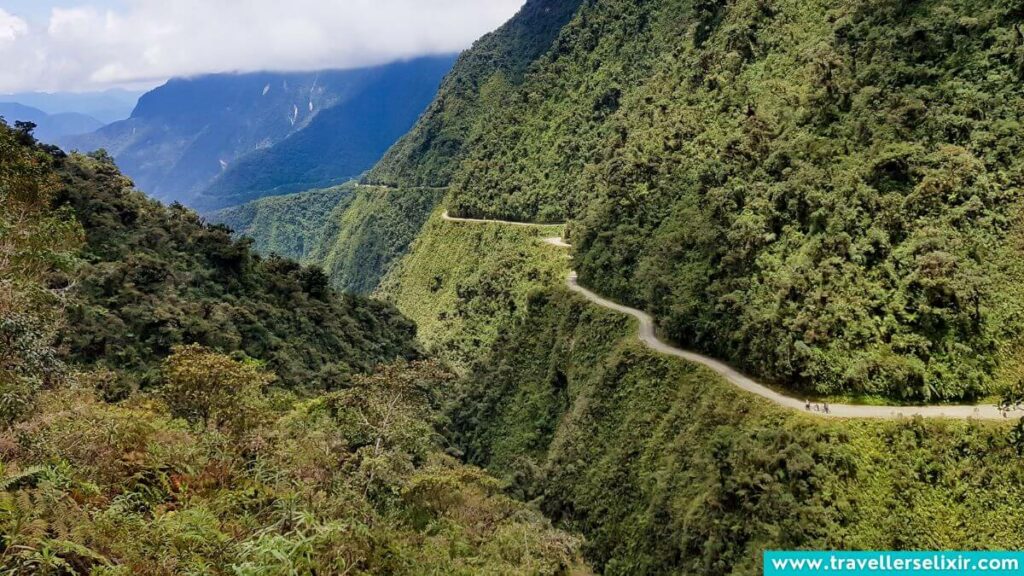
- Deaths per 100,000 Visitors: 168
- Average Annual Visitors: 25,000
- Average Annual Deaths: 42
- Top Cause of Death: Falls
Third on the list of most dangerous attractions is North Yungas Road in Bolivia which is a cycling route in the Andes mountains that is popular with mountain bikers.
It’s one of the most popular attractions in Bolivia’s capital city, La Paz.
It’s essentially a dirt track road that runs along the side of a mountain in the Andes. The track itself is just 3-meters wide and there’s no railings.
In the 1990s and early 2000s, it was reported that between 200 and 300 people died every year on the road as it was the only route from La Paz to the Amazon Rainforest.
Vehicles often slipped off the road, falling 1000m into the valley below. One of the worst tragedies was in 1983 when a bus carrying more than 100 passengers fell into the canyon below.
In 2009, an alternate road was opened so now only tourists and cyclists use North Yungas Road but it’s still pretty dangerous and 42 people still die each year on this treacherous road.
In April 2023, it was reported that a 27-year old cyclist had lost his life whilst cycling here.
4. Mount Kilimanjaro, Tanzania

- Deaths per 100,000 Visitors: 20
- Average Annual Visitors: 50,000
- Average Annual Deaths: 10
- Top Cause of Death: Falls
Mount Kilimanjaro is a dormant volcano that is 5,895m tall.
It’s actually the world’s highest free-standing mountain and every year, around 50,000 people travel to Tanzania to try and climb it.
Unfortunately for every 100,000 people that attempt to climb it, 20 of them die whilst trying to do so.
In December 2022, a journalist fell to their death as they descended the mountain and in February 2021, a tourist died after his parachute failed to open when he jumped off the mountain.
5. Mount Everest, Nepal

- Deaths per 100,000 Visitors: 20
- Average Annual Visitors: 35,000
- Average Annual Deaths: 7
- Top Cause of Death: Environmental
Mount Everest is the world’s highest mountain, standing at 8,849m tall in Nepal and China.
Every year around 35,000 people attempt to climb it and, on average, 7 people perish each year trying to do so.
Worryingly, the rate of deaths is starting to increase as in May 2023, it was reported that 17 climbers were thought to have died that year trying to climb it.
Nepal’s head of tourism said that climate change has led to variable weather on the mountain which is the likely cause of the increase in deaths.
Many of the deaths were environment related, such as when an ice tower collapsed and killed 3 Sherpa guides, or due to sickness, cold or exhaustion.
6. Salar de Uyuni, Bolivia
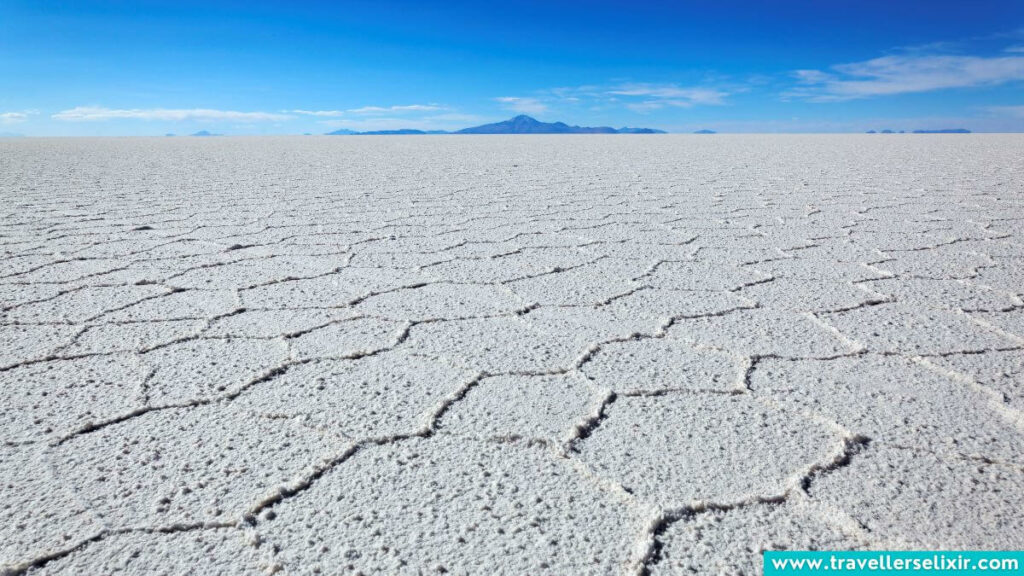
- Deaths per 100,000 Visitors: 6.2
- Average Annual Visitors: 65,000
- Average Annual Deaths: 4
- Top Cause of Death: Motor Vehicle Crash
At number 6 is Salar de Uyuni in Bolivia which is the world’s largest salt flat.
It’s all that remains of a prehistoric lake that dried up leaving behind a desert-like salt pan that covers almost 11,000 sq km.
Shockingly, out of every 100,000 people that visit this salt flat, 6 of them die. The most common cause of death is a car crash.
Vehicles often flip over, sometimes killing those inside. Car crashes between multiple vehicles are also not uncommon. Many of the vehicles involved in the crashes are tour buses.
In 2019, two British teenagers were killed when their car flipped over whilst driving and in October 2022, 3 people died when their tour bus overturned on the salt flats.
7. Dead Sea, Israel

- Deaths per 100,000 Visitors: 5.6
- Average Annual Visitors: 800,000
- Average Annual Deaths: 45
- Top Cause of Death: Drowning
Israel’s Dead Sea is actually not a sea but a large salt lake. It’s known to be one of the world’s saltiest bodies of water and it’s also the lowest point on Earth.
It’s an extremely popular tourist attraction due to its apparent healing properties. Over 800,000 people travel to swim in it each year.
One common myth is that it’s impossible to drown in the Dead Sea as, due to the extremely salty waters, you would just float up to the surface.
This rumor is however false as, on average, 45 people drown each year in the Dead Sea.
In May 2023, it was reported that a 70 year old woman had drowned here and just a few months later, a 75 year old man died in similar circumstances.
8. Ben Nevis, UK
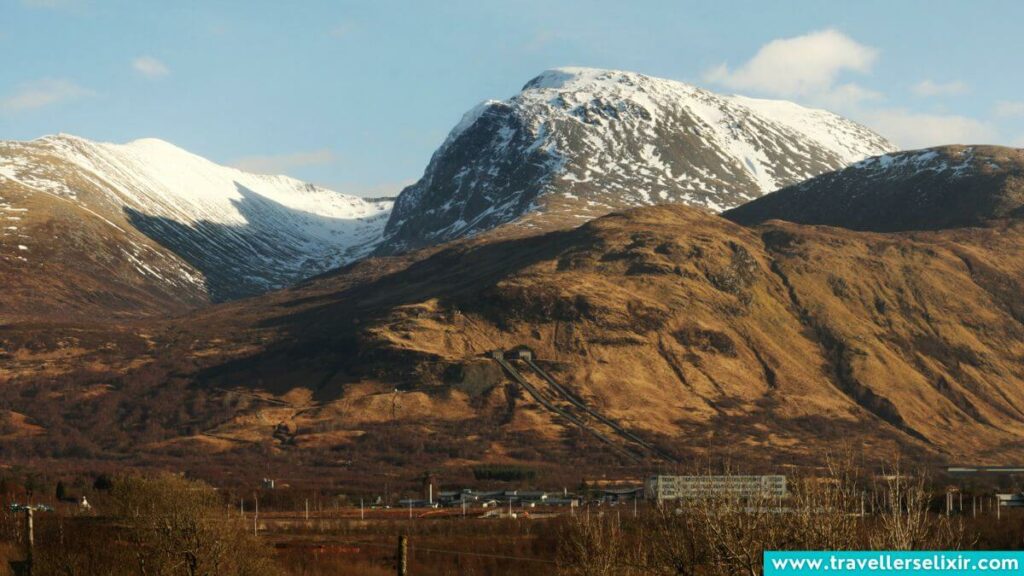
- Deaths per 100,000 Visitors: 4.6
- Average Annual Visitors: 130,000
- Average Annual Deaths: 6
- Top Cause of Death: Falls
Ben Nevis, which is located in Scotland, is the highest mountain in the United Kingdom at 1,345m tall.
Around 6 people die every year whilst trying to climb this mountain, making it the most dangerous tourist attraction in the UK.
Most deaths occur due to avalanches, bad weather or falling from a steep rock face.
In December 2022, a teacher died after accidentally triggering an avalanche whilst climbing the mountain.
Earlier that year, an experienced climber who even ran a Ben Nevis tour company also died when he got caught up in an accident.
9. North Cascades National Park, USA
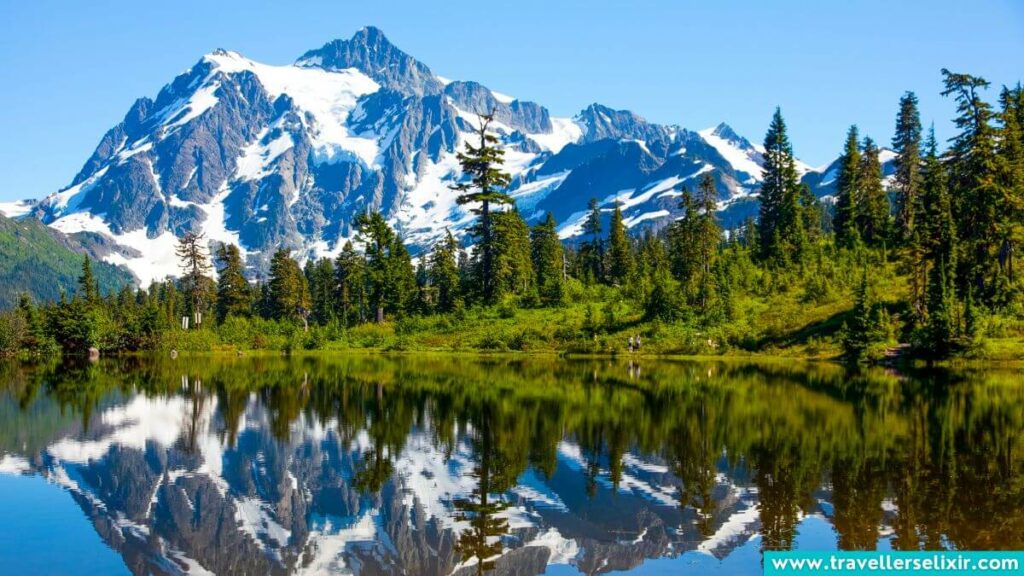
- Deaths per 100,000 Visitors: 3.3
- Average Annual Visitors: 30,000
- Average Annual Deaths: 1
- Top Cause of Death: Falls
The North Cascades National Park, located in Washington State, is the most dangerous tourist attraction in the USA.
This popular national park stretches over 500,000 acres and features over 300 glaciers, several mountain peaks, large valleys, waterfalls, lakes and more.
It’s earned the nickname ‘American Alps’ due to its mountainous peaks and green slopes.
Unfortunately it also has the highest death rate of all the national parks in the US. For every 100,000 people who visit the park, 3 die in an accident.
Most people visit the park for hiking, climbing, mountaineering and canyoneering. Due to the rugged terrain and wet weather, accidents occur often.
In 2017, a woman died after falling several hundred feet whilst hiking in the park and in 2022, a 26 year old mountaineering guide also fell to his death in the park.
10. Amazon Rainforest, Brazil

- Deaths per 100,000 Visitors: 3.1
- Average Annual Visitors: 130,000
- Average Annual Deaths: 4
- Top Cause of Death: Murder
At number 10 is the Amazon Rainforest which is the largest tropical rainforest in the world covering over 6.7 million km2.
Approximately 130,000 tourists travel to the Amazon every year to see its wonders but, unfortunately, not all of them return home.
Surprisingly, the main cause of death is actually due to criminal groups who have been known to kidnap and rob tourists, sometimes killing them in the process.
In 2017, a solo female traveler was robbed and murdered by pirates whilst kayaking on the Amazon River and in 2022, two men were murdered after trying to take photos of some locals.
Several tourists have also died after taking a drug used in a spiritual cleansing ceremony known as an ‘Ayahuasca ceremony’ that has become popular in recent years.
The Brazilian Amazon actually has the highest homicide rate in the country at 41.7 per 100,000 inhabitants.
As a comparison, the US has a homicide rate of 6.8 and the UK has a rate of just 1.1.
Conclusion
This article has provided a list of the top 20 most dangerous tourist attractions in the world, based on average death figures per 100,000 visitors.
60% of the attractions are mountains with Mont Blanc in Italy/France being the most dangerous as it claims approximately 500 lives per 100,000 visitors.
Water-based attractions like lakes and rivers account for another 20% of the list with the Dead Sea in Israel being the most dangerous lake as it causes 5.6 deaths per 100,000 visitors.
Bolivia is the only country that has two tourist attractions in the top 10 (Salar de Uyuni and North Yungas Road).
Interestingly more than half (60%) of the attractions featured in the list are in developed countries.
This may be explained by lack of data / record keeping in lesser developed countries.
Methodology
We started by compiling a list of 125 popular tourist attractions around the world.
We then consulted government and organizational reports to determine the average number of deaths at each attraction per year as well as the average number of yearly visitors.
Where no official reports were available, we used local news reports and various publications to determine the average number of deaths.
In order to rank them fairly, we divided the average number of deaths per year with the average number of visitors per year.
We then multiplied this number by 100,000 to get the average number of deaths per 100,000 visitors.
Some tourist attractions were omitted from the study where data was not available or where statistics couldn’t be verified.

